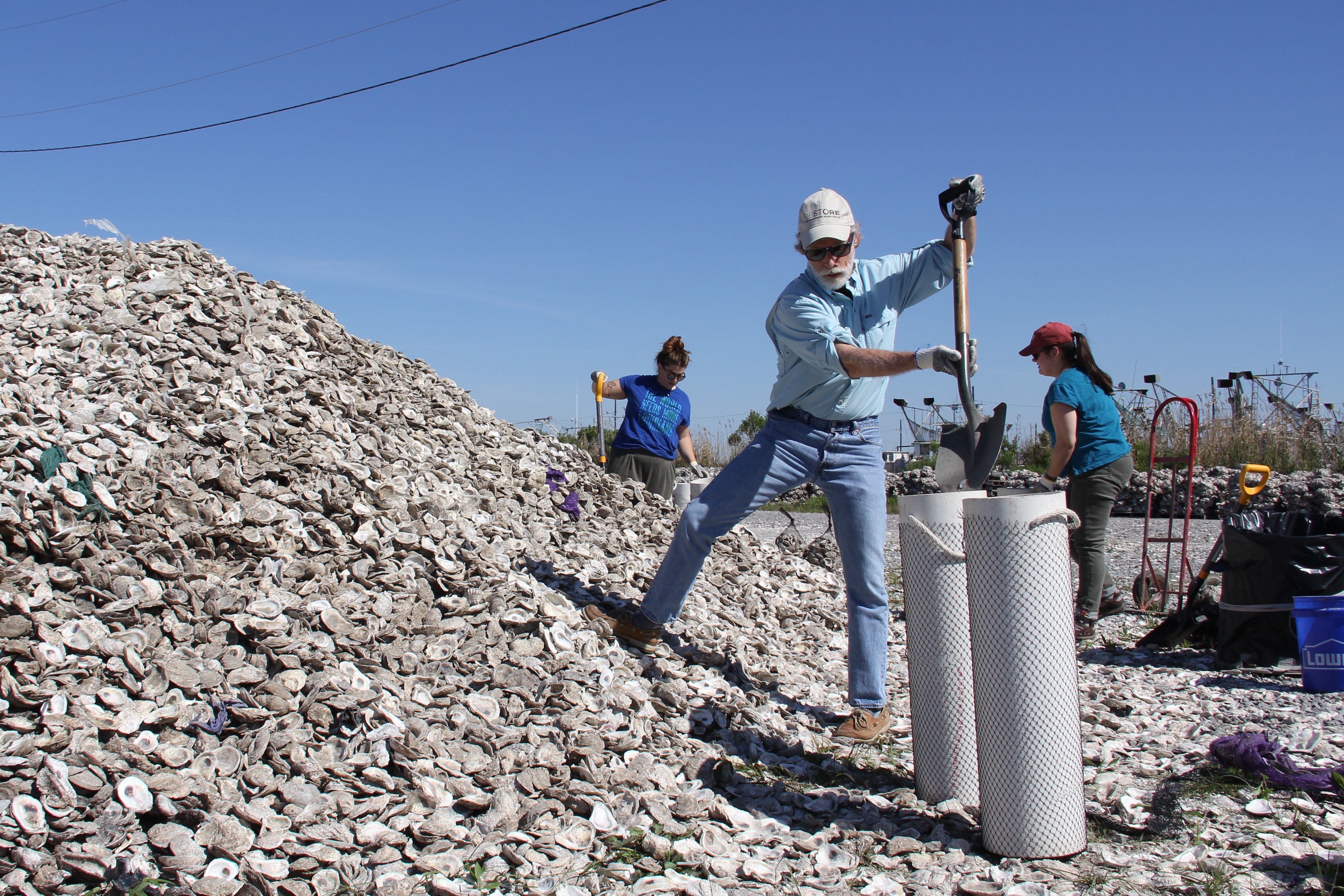CRCL’s innovative recycled oyster reefs protect sacred indigenous land from erosion
The Pointe-au-Chien Indian Tribe, indigenous to south Louisiana’s coast, watch year by year as more of their land is lost to the sea. Their sacred sites, including ancient earthen mounds, are threatened with erosion. The Pointe-au-Chien Indian Tribe recently partnered with the Coalition to Restore Coastal Louisiana (CRCL) to build reefs out of recycled oyster shells to protect some of their sacred land. Current and former Serve Louisiana members helped build the partnership and the Oyster Shell Recycling Program that turns discarded oyster shells into land protection.
“They’re helping us save what we want to save,” said Pointe-au-Chien Indian Tribe Elder Theresa Dardar. “They’re not just here to see what’s happening. They’re here because they care.”
Land in south Louisiana is vanishing into the sea at an alarming rate: one football field of wetlands is lost every 100 minutes. Along with this land, other indigenous mounds dating back thousands of years are also disappearing.
A number of manmade causes are to blame. Leveeing the Mississippi River prevents natural river sediment from building up in the area, allowing land subsidence, or sinking, to dominate. Shipping channels, canals, and energy infrastructure built by cutting into existing marshes, disturb the delicate freshwater and brackish marsh ecosystems and introduce sea water that kills plants, which causes erosion. Sea level rise intensifies the positive feedback loops from the river levees and canals.
“Coastal Louisiana experiences the highest rates of land loss in the world,” said Darrah Bach, CRCL’s Oyster Shell Recycling program manager and Serve Louisiana alum. The warnings and demands for change from Louisiana coastal communities have largely been ignored. The devastation has already forced one community here to relocate, Bach explained, becoming one of the first climate refugee communities in the world.
“It’s very important work because our history was being lost. It’s our connection to the land and to our people.” —Theresa Dardar, Elder, Pointe Au-Chien Indian Tribe
The situation became so dire for the Pointe-au-Chien Indian Tribe, that they approached CRCL for support. “We don’t like to identify where our mounds are, but we felt that we had no choice; otherwise, we would have lost it,” Dardar said. “It’s very important work because our history was being lost. It’s our connection to the land and to our people.”
“They came to us. This project has been determined by that community,” Bach said. The tribe provided permission to access the sites, helped host volunteer events, and provided boats to access the site. CRCL hired tribal members as “captains” to convey the oyster shells and volunteers to the site and monitor the reef construction. “A good model for future partnerships,” said Bach.
The idea of the oyster reef wasn’t new. Local oyster fishermen and restaurant owners have been partnering to put used shells back in the water for years. That’s because recycled shells provide habitat for new baby oysters to grow.
“Oyster reefs have been shown to grow so quickly that they can outpace sea level rise,” Bach said. “And so the reefs that we’re building, they’ll grow vertically and horizontally and continue to expand the footprint of the project, theoretically forever.”
The reefs provide habitat for other critical species as well, which benefits the overall ecosystem. “Oyster reefs are sometimes titled ‘ecosystem engineers,” said Bach. “All sorts of marine life come to gather, to live, and eat off of the reef.”
“It may not bring land back, but it’s going to protect it,” Dardar said. “The first one that we built, they now have oysters big enough to harvest, but we’re not letting anyone harvest them because we want it to continue to grow as an oyster reef.”
According to the Louisiana Health Department, 1.3 million Louisiana oysters are consumed each day.
“Restaurants didn’t have a formal way to return their shells to the coast, and they really had no other option than to put them in the trash,” Bach said. “It was a really easy sell. This is giving the kitchens a new way to separate waste; giving the shuckers a better, more elevated role; and allowing the restaurant to contribute to regional sustainability.”
“We continue to advocate for large-scale state restoration… What we hope to see is that our volunteers are so inspired by this work that they will continue supporting policy that benefits coastal restoration.” —Darrah Bach, Serve Louisiana Alum
So far, the program has recycled 13 million pounds of oyster shells. By diverting shells from the landfill, CRCL has protected 8,000 feet of coastal land through five reef projects since 2014.
This success allowed CRCL to convince state lawmakers to provide a tax credit for restaurants recycling oyster shells.
Meanwhile, the state approved a $50 billion plan to save the coast that doesn’t include funds for protecting Pointe-au-Chien Indian Tribe’s land or CRCL’s oyster reef projects. “We have to go on our own, looking for funds to try to save our community, because they're not,” said Dardar.
“We continue to advocate for large-scale state restoration while we do our smaller scale work,” said Bach, who is hopeful that the success of CRCL’s oyster reefs will encourage more engagement and advocacy on behalf of the coast, its ecosystem, and its people.
“It’s really important that people who eat and sell seafood are in tune with the perils of the fishing communities and the state of the local coastal environment and ecosystems,” Bach said. “What we hope to see is that those people are so inspired by this work that they will continue supporting policy that benefits coastal restoration.”
Bach got her start with CRCL as a Serve Louisiana AmeriCorps member. Through her service, she rebuilt relationships with the Pointe-au-Chien Indian Tribe, who took her to the sacred sites that were starting to wash away. She researched and then applied for the permits to construct the reef. The partnership was built from the ground up.

Toward the end of Bach’s term, CRCL opened two full-time staff positions. Bach applied to both and was hired. After a year on the job, Bach became a supervisor of a Serve Louisiana AmeriCorps member. “Their first week was spent building a reef,” Bach said.
“Our Serve Louisiana members do outreach, tabling and run volunteer events. They are the outward facing face of CRCL, sowing seeds to growing partnerships,” she explained. Members work to build and strengthen long term restoration projects, including the replanting of native trees. “Their positive spirit fosters community relationships.”
Throughout their work, CRCL does its best to follow the lead of the people most impacted by land loss, especially the indigenous. One tribal elder in Grand Bayou Indian Village, for example, told CRCL that funding earmarked for hurricane relief should be going to coastal restoration. “We listened,” Bach said. “We reallocated the funds to a mangrove restoration project.”
Theresa Dardar takes care to remind people why it’s important to listen to the Pointe-au-Chien Indian Tribe and other coastal communities: “We're the bumper, but if you don't protect us, you’re next.”
By: David Ferris
